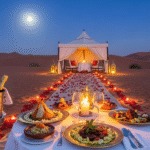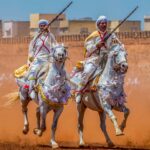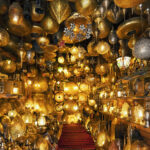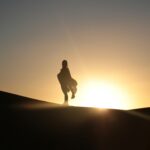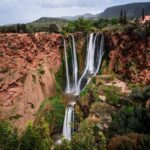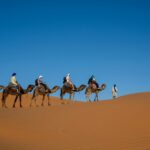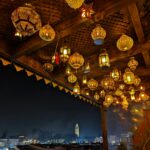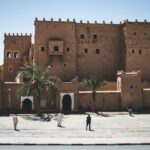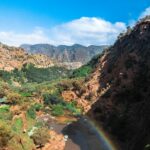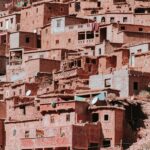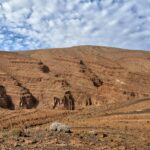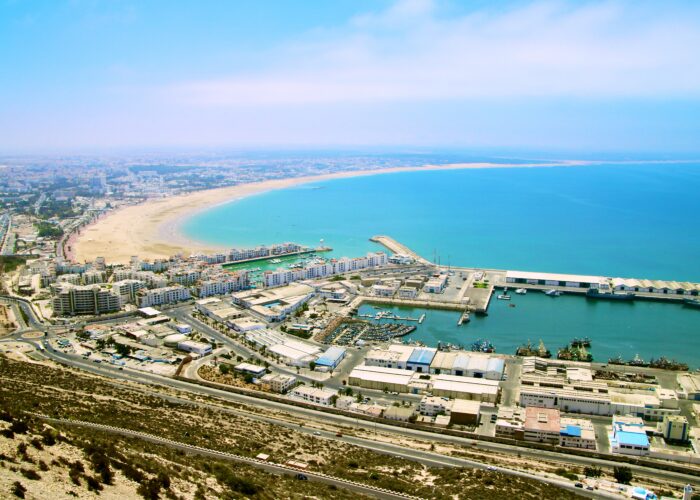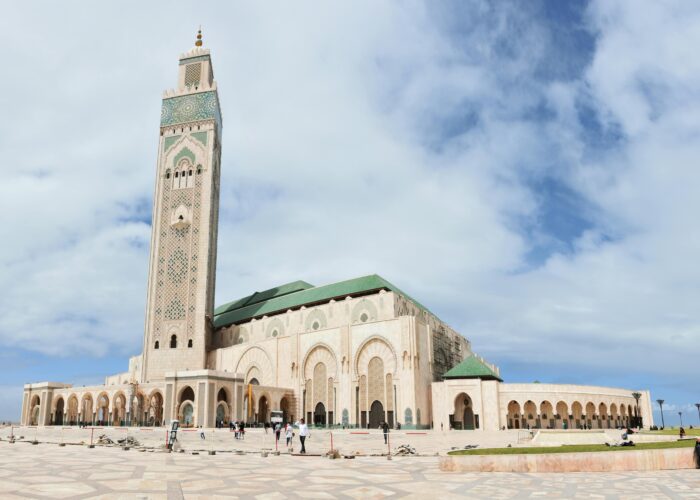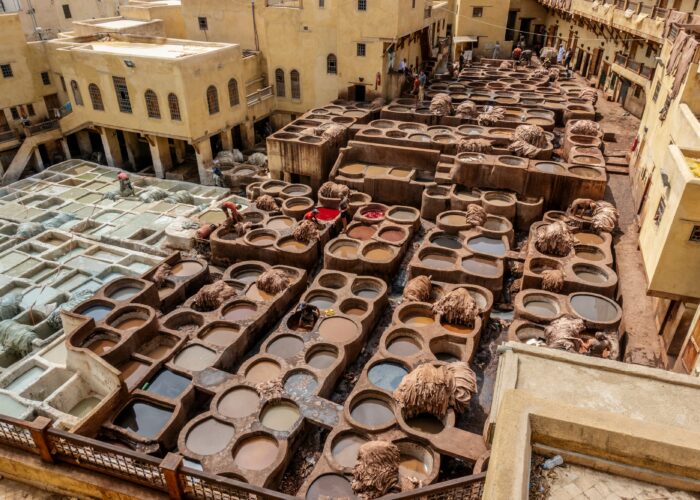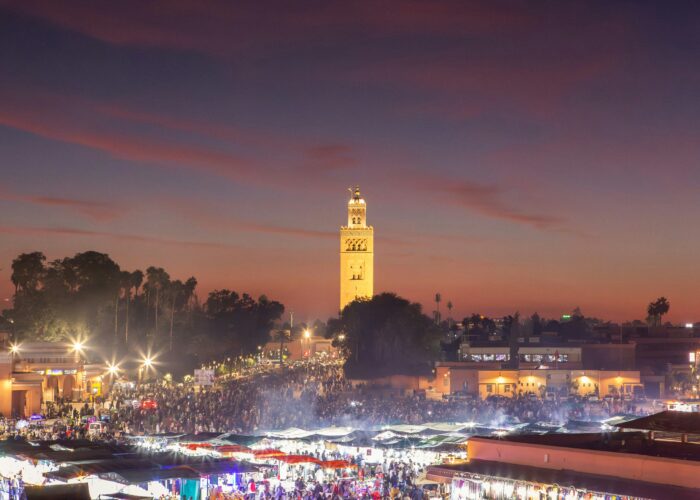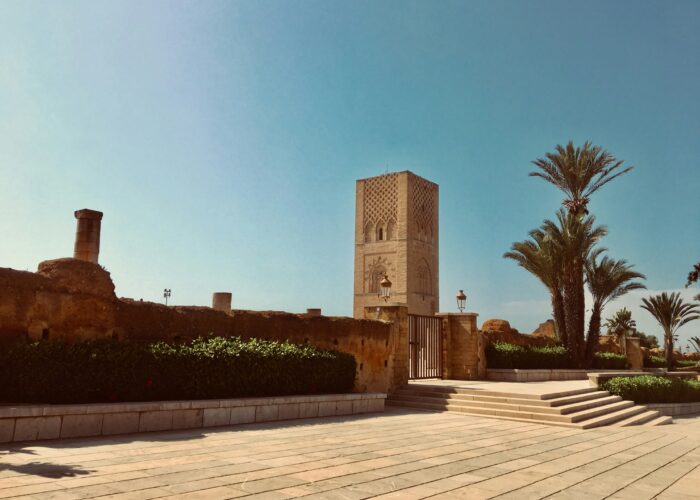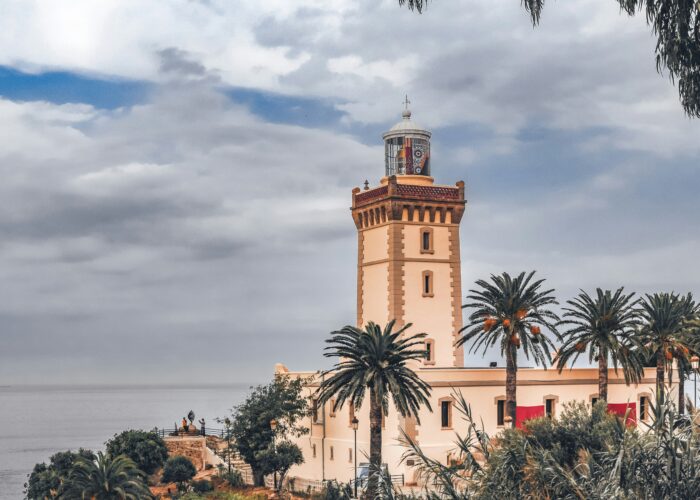Introduction to Camel Trekking
Camel trekking in the Moroccan Sahara offers a unique experience that intertwines adventure with cultural significance. Historically, camels have served as vital transportation in the desert, with caravans facilitating trade across vast stretches of arid land. The significance of these majestic animals in Moroccan culture cannot be overstated, as they symbolize endurance, resilience, and adaptability in a challenging environment. The tradition of traversing the Sahara by camel has captured the fascination of travelers and adventurers from around the globe.
As tourists embark on these excursions, they are greeted with the stark beauty of the desert landscape, from towering dunes to charming oases. The opportunity to witness stunning sunsets while riding allows participants to engage deeply with their surroundings, creating a profound connection to nature. Having the chance to enjoy solitude on the back of a camel while taking in the unmatched serenity of the Sahara contributes to the emotional experience of camel trekking. Many travelers report feelings of peace and connection with the environment, aside from the exhilaration of discovering Moroccan culture.
While considering whether camel riding in Morocco is worth it, it is essential to recognize that the experience often transcends mere enjoyment. The appeal lies in the way it provides insight into the age-old practices of local communities and promotes an understanding of the symbiotic relationship between humans and camels. However, to ensure a more informed experience, potential trekkers should contemplate various factors, including what to wear when camel riding in Morocco, and whether it is ethical to ride camels in Morocco. Understanding these dynamics can enrich one’s journey, transforming an adventure into an impactful cultural exchange.
Preparing for Your Trek
Embarking on a camel trek in the Moroccan Sahara requires thorough preparation to ensure a rewarding experience. One of the critical first steps is to select a reputable trekking tour operator. A responsible operator will prioritize the well-being of their camels, ensuring ethical practices are upheld. You may ponder whether camel riding in Morocco is humane; therefore, seeking companies that promote ethical treatment is essential. Ensure they provide adequate rest and care for the camels, as the question of whether camels enjoy being ridden is often debated.
When planning your trek, packing wisely is paramount. Essential items include lightweight, breathable clothing suited for the harsh desert environment. Many travelers wonder what to wear when camel riding in Morocco, and choosing long, loose garments can protect against both sun exposure and potential scratches from the camel’s saddle. A djellaba, a traditional Moroccan cloak, can be a good choice. Footwear should be comfortable yet supportive, with closed-toe shoes recommended for safety. Additionally, consider sun protection, including a wide-brimmed hat, sunglasses, and sunscreen to guard against sunburn.
Staying hydrated is crucial while navigating the Sahara’s arid climate. Make sure to drink ample water throughout your journey, particularly as dehydration can lead to discomfort while riding. Understanding health considerations and recognizing the signs of distress in camels, such as sudden changes in behavior, is also important during your trek. It is natural to be concerned about whether it is painful for camels to be ridden. Therefore, observing their well-being is key to a positive experience. As you prepare for your adventure, incorporating these essential tips will enhance your camel riding experience and allow you to explore the breathtaking landscapes of the Moroccan Sahara comfortably.
The Trekking Experience: What to Expect
Camel trekking in the Moroccan Sahara is an adventure that offers a unique blend of cultural immersion and physical challenge. Typically, a trek begins early in the morning when the sun slowly rises over the vast expanses of sand dunes. Riders, often guided by knowledgeable Berber locals, embark on their journey atop camels. These animals, known for their endurance and ability to traverse long distances, become an integral part of the experience. Visitors may wonder, “Is camel riding in Morocco worth it?” Many participants can attest to the breathtaking landscapes and the profound connection that develops with both the camel and the surroundings.
The day usually consists of several hours of riding, where trekkers can witness the stunning changes in scenery. As one traverses the golden dunes, it’s not uncommon to pause for breaks, allowing both camels and riders to rest. The question of whether it is humane to ride camels in Morocco often surfaces, and experts suggest that as long as the camels are treated well, regular riders generally enjoy the activity. However, it is important to note that there are caveats, such as the camel weight limit in Morocco that should not be overlooked.
Once the sun sets, the atmosphere transforms as trekkers set up camp under a star-studded sky. This communal experience includes sharing meals with local guides, who often prepare traditional Berber dishes. Trekkers can also engage in storytelling or musically rich nights around the campfire. This bonding period allows one to reflect on the day’s journey while creating lasting memories. Nonetheless, camel trekking also comes with its physical demands; participants may experience discomfort or even motion sickness on a camel if unaccustomed to the sway of the animal’s gait.
Thus, as trekkers navigate the sands, they may simultaneously face mental and physical challenges that enhance their journey. The trek not only offers scenic beauty and rich cultural experiences but also an inner exploration that many find rewarding. Personal stories shared by previous trekkers highlight the allure of adventure and the lessons learned throughout the experience.
Cultural Encounters and Local Communities
Camel trekking in the Moroccan Sahara offers a unique opportunity for cultural encounters with local communities, particularly the Berber people. The Berbers, known for their rich traditions and customs, have inhabited this region for centuries. Immersing oneself in their culture during a camel ride adds depth to the overall experience. Trekkers can participate in traditional music sessions, where the enchanting sounds of the oud and percussion instruments foster a sense of camaraderie among visitors and locals alike. Additionally, storytelling plays a crucial role in Berber culture. Guides often share tales of the desert, its history, and legends that have been passed down through generations, enhancing the trekking experience beyond mere sightseeing.
However, as travelers engage with these local communities, it is essential to practice responsible tourism. Respecting local customs, such as attire and social etiquette, is paramount. This is where understanding “what to wear when camel riding in Morocco” can be vital—not only for comfort but also for cultural sensitivity. It is advisable to wear loose-fitting clothing, as it is more respectful and suitable for the desert climate; traditional garments like a djellaba can be both functional and culturally appropriate. Furthermore, supporting local economies by purchasing crafts and food from Berber artisans during the trekking experience ensures that travelers contribute positively to the communities they encounter.
As travelers reflect on their experiences, they often express a profound appreciation for the warmth and friendliness of the Berber people. Testimonials from local guides reveal how interactions can lead to unforgettable memories, fostering a bond between trekkers and locals. Moreover, it is crucial to uphold environmental practices while engaging with these communities to ensure the preservation of their culture and the natural environment. By being mindful of the potential impacts of tourism, such as the “disadvantages of traveling with a camel,” trekkers can help safeguard the future of the Sahara and its inhabitants. In summary, camel trekking is not only about traversing the desert but also about forging connections with the local culture and communities that thrive within it.


